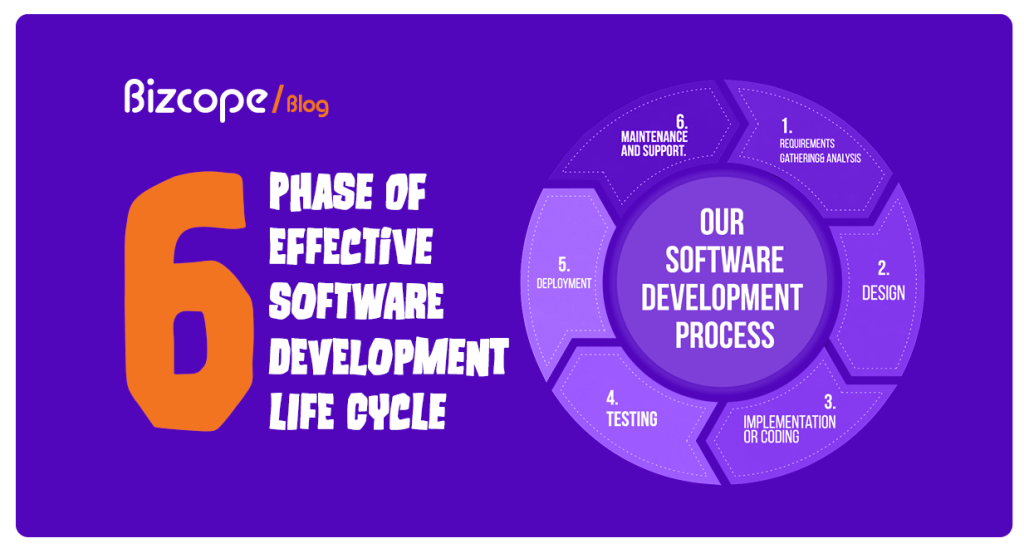The Software Product Development Life Cycle (SDLC) is a process that describes the stages of developing software from concept to deployment. Each stage in the SDLC has a unique set of activities, and it’s important to understand each stage for successful software development.
SDLC (Software Development Life Cycle) plays a critical role in software development services. In this post, we’ll discuss the 6 phases of the software development life cycle (SDLC).
Let’s dive right in!
Phase 1: Planning
The planning phase is where you define the project’s scope and objectives, identify the resources required, and establish a project plan and timeline. This phase involves defining the project requirements and setting the goals and objectives. It also involves allocating resources for the project and creating a project plan and timeline. Without proper planning, a project can quickly go off-track and fail to deliver the desired results.
Phase 2: Analysis
The analysis phase is where you gather and analyze the project requirements, perform a feasibility study, and define the software specifications. In this phase, you need to gather and analyze the user requirements and define the software specifications.
You also need to create a functional specification document, which outlines how the software will work and what features it will have. By performing a feasibility study, you can determine whether the project is feasible and cost-effective.
By following the SDLC and completing the planning and analysis phases, you can set your software development project up for success. In the next sections, we’ll cover the remaining phases of the SDLC to help you better understand the software development process.
Phase 3: Design
The design phase is where you create the software architecture and develop a detailed design plan. In this phase, you’ll also create a user interface design and define the software testing strategy. The design phase is critical to ensure that the software is designed to meet the project requirements and that it is scalable and maintainable.
Phase 4: Development
The development phase is where you write the code and build the software. This is the longest phase of the SDLC, and it involves developing the software in accordance with the design specifications. You’ll also perform unit testing during this phase to ensure that the code is functional and meets the specifications.
Phase 5: Testing
The testing phase is where you verify that the software works as intended and meets the project requirements. This phase involves a series of testing cycles, including unit testing, integration testing, system testing, and user acceptance testing. The goal of the testing phase is to identify and fix any bugs and issues before releasing the software to the end-users.
Phase 6: Deployment
The deployment phase is where you release the software to the end-users. This involves installing the software, training the users, and providing ongoing support. During this phase, you’ll also monitor the software’s performance and gather feedback from the end-users to improve the software in future releases.
To Sum Up
In conclusion, the Software Product Development Life Cycle (SDLC) is a comprehensive process that outlines the stages of software development from concept to deployment.
By following the SDLC and completing each phase, you can ensure that your software project is successful, meets the project requirements, and is delivered on time and within budget.

